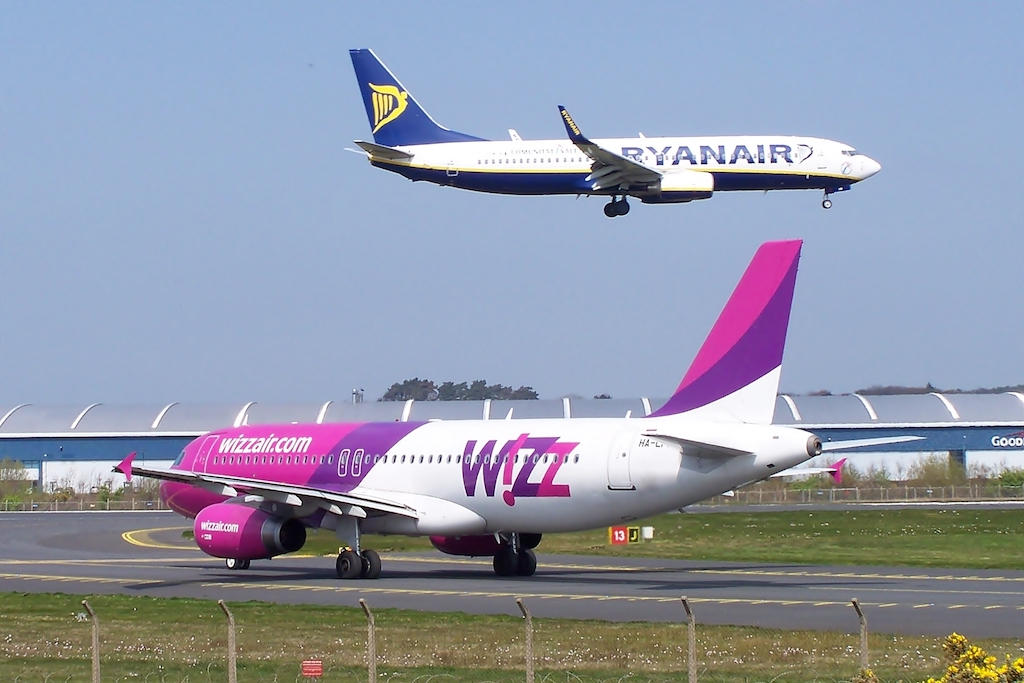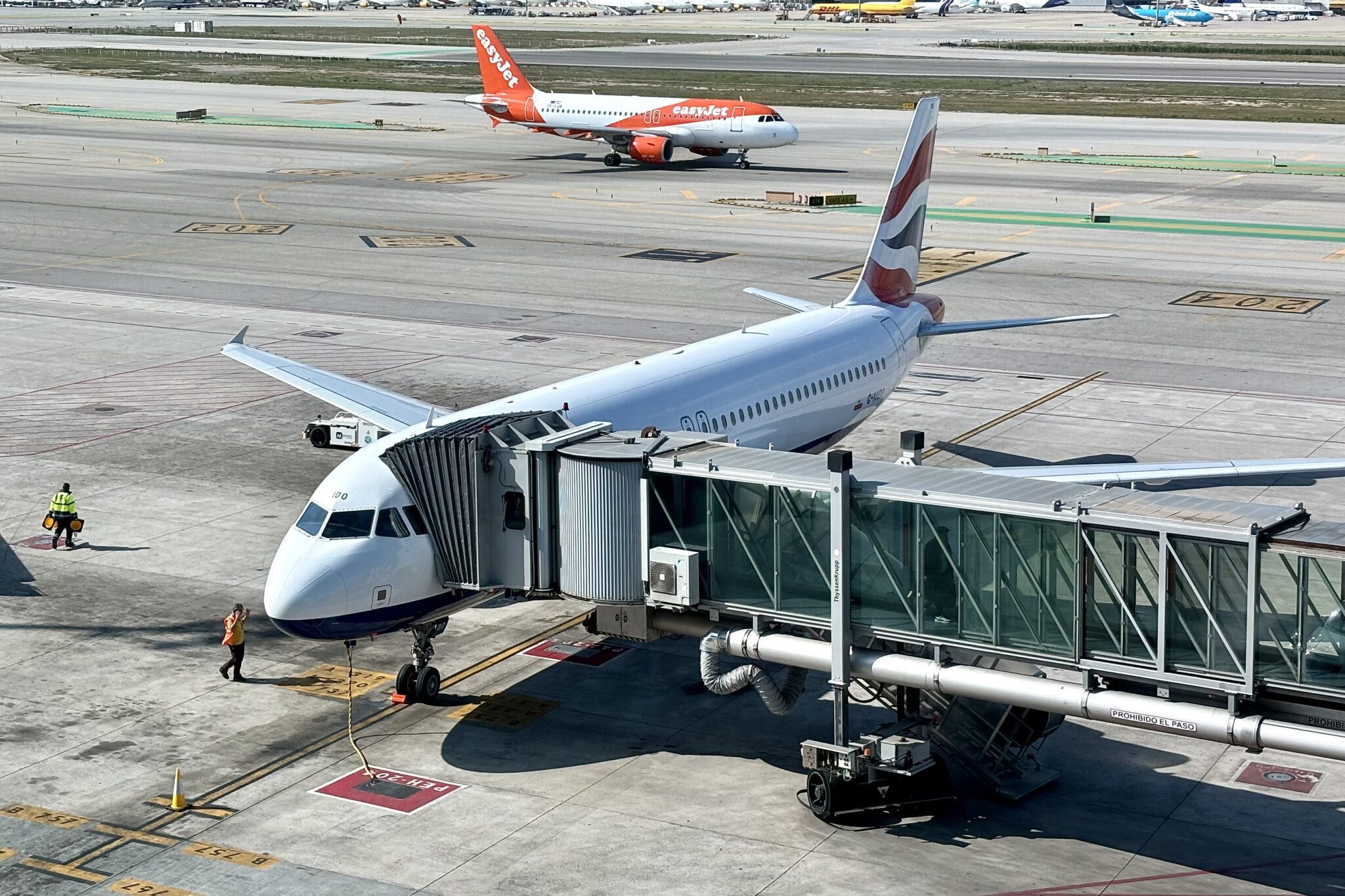Wizz Air CEO József Váradi was almost flattered by the amount of time Ryanair CEO Michael O’Leary spent on his airline’s recent earnings call to take down Wizz. In fact, O’Leary’s comments could be taken as a sign that Wizz’s strategy of challenging Europe’s largest carrier in the race to dominate the continent’s air travel recovery is working.
“A few years ago, O’Leary couldn’t even spare the word Wizz,” said Váradi during the Hungarian discounter’s June quarter earnings call on Wednesday. “I’m glad he’s spending half of his presentation on us [now] though.”
Ryanair and Wizz are on a collision course for European travelers. Both see significant opportunities to grow through the recovery in Europe; especially in markets where incumbent carriers have retrenched, restructured, or gone away entirely. And both have orderbooks for 200-plus aircraft that give them the means to realize this growth. The only question is whether there are enough would-be travelers for the two discounters to seize, not to mention the recovery growth plans of pretty much every other airline on the continent.
For now, Wizz has its eyes on Italy and the UK, and eventually Abu Dhabi. Váradi called both former countries “investible markets” — a term he’s used before — where the airline sees significant growth opportunities. Italy and the UK have also seen an industry restructuring, for example the imminent launch of Italia Trasporto Aereo (ITA) that will replace Alitalia at about half the former carrier’s size. And in the UK, Flybe shut down at the beginning of the pandemic while British Airways has retrenched. These structural changes have caught the attention of Wizz — and others — as they look to grow out of the crisis.
“You should certainly be expecting a lot more activities coming out of this airline when it comes to Italy,” said Váradi. This will include new bases, additional aircraft dedicated to the market and more routes. Wizz has opened or unveiled bases in Naples, Palermo and Rome Fiumicino since the beginning of the crisis.
Italy is also a strategic focus for Ryanair. The airline has expanded its presence in Rome, which O’Leary said was driven by Alitalia’s demise, and is opening new bases in Turin and Venice Treviso.
Based on current schedules — almost certainly subject to change — Ryanair will have a 31 percent share and Wizz nearly 11 percent of seats in the Italian domestic and European market in 2021, according to Cirium schedules. That represents 4 points of share growth for Ryanair and 7 points for Wizz compared to 2019. Much of the share gains came from cuts at Alitalia and EasyJet.
Overall, Wizz plans to recover to 2019 capacity levels by August and then grow at an average annual rate of 20 percent over the next five years. The airline’s fleet of Airbus A320-family aircraft will more than double to 246 in March 2026 — the end of its 2026 fiscal year — from 141 at the end of June. And Váradi envisions Wizz growing to as many as 500 aircraft by the end of the decade.
“You buy aircraft when the time is right for buying aircraft, not when you think you need the aircraft,” he said when asked by analysts whether the 500-aircraft target would entail a new order. Wizz had firm commitments for 242 A320neo and A321neo jets in June, according to Airbus’ orders and deliveries data.
Wizz has accelerated 10 aircraft deliveries into next summer, and is working with Airbus to move up more deliveries in its orderbook, added Váradi.
One concern among analysts are Wizz’s recent operational issues. Asked about cancelled flights and wet-leased aircraft, Váradi put the blame squarely on the shoulders of third-party airport and ground handling contractors that were unable to handle the recent ramp up in flights. Operations have “stabilized” and the wet-leased aircraft will leave the Wizz fleet in the next several months, he said.
In the June quarter, Wizz posted a pre-tax loss of nearly €114 million ($135 million). Revenues decreased 71 percent to €199 million and expenses nearly 49 percent to €308 million compared to 2019. And in a sign that the European recovery still has a way to go, RASK dropped 30 percent on a CASK excluding fuel increase of 57 percent year-over-two-years.
At the same time, Wizz generated its first positive cash flow since the crisis began during the quarter.
Wizz provided few details into its outlook for the September quarter beyond the recovery in August capacity. Longer term, returning load factors and aircraft utilization rates to pre-crisis levels is a focus for the airline, and executives expect both unit revenues and costs to normalize as these metrics recover.
“We will be the first major European airline that will be fully recovered,” said Váradi referring to capacity.





